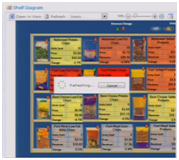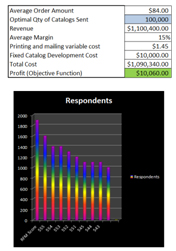Often when I’m out visiting customers or prospects, we’ll get bogged down on a singular feature or function, and lose sight of the entire business process. Similarly, it’s easy to focus on Dynamics AX and all of its features and functions, and lose sight of its role as one component in a very powerful suite of tools provided by Microsoft.
Synergy can be loosely defined as the sum of the whole being greater than the sum of the individual parts and this is precisely the case when it comes to the Microsoft desktop. One of the primary benefits of using an ERP system likes Dynamics AX is that it blurs the line between the desktop and the business system, and this can provide outstanding value and user productivity. Here are three quick examples for you, but I encourage you to give me feedback on other areas where you are using this technique to optimize your ROI.
Microsoft Outlook
Obviously e-mail has become a huge component of our day-to-day business interactions. However, the ability to leverage this dialog within the context of ERP is very exciting. A recent example we demonstrated was the ability for a Customer Service Rep working an inbox queue to simply click one button in the Outlook ribbon to have it automatically create a Customer Issue and attach the e-mail to the customer correspondence history for all (with proper security) to view. This one-click office add-in has made it virtually impossible to answer the question “Am I working in AX or Outlook?”
Microsoft Visio
 One of my favorite sessions from this year’s Convergence conference was a session titled “You can do THAT in Visio?” If you missed it and are interested, send me an email and I’ll send you a link to the video. One of the most interesting demonstrations in this session was showing how a Visio diagram could be used to display live data from the ERP database. This was very powerful for visualizing regional performance, supply chain issues, and even a retail planogram on shelf-space performance. This functionality comes “out of the box” and simply requires some configuration of data connections.
One of my favorite sessions from this year’s Convergence conference was a session titled “You can do THAT in Visio?” If you missed it and are interested, send me an email and I’ll send you a link to the video. One of the most interesting demonstrations in this session was showing how a Visio diagram could be used to display live data from the ERP database. This was very powerful for visualizing regional performance, supply chain issues, and even a retail planogram on shelf-space performance. This functionality comes “out of the box” and simply requires some configuration of data connections.
Microsoft Excel
 I’m sure you are familiar with the ability to export data from Dynamics AX to Excel, but what are you doing with it once it’s there? Did you know that in AX 2012, there is built in functionality to allow you to edit the data in Excel, and then directly update the data in AX from the spreadsheet? Another interesting feature we’ve seen is people taking advantage of the Solver add-in to Excel to use Linear Programming techniques to solve complex optimization problems.
I’m sure you are familiar with the ability to export data from Dynamics AX to Excel, but what are you doing with it once it’s there? Did you know that in AX 2012, there is built in functionality to allow you to edit the data in Excel, and then directly update the data in AX from the spreadsheet? Another interesting feature we’ve seen is people taking advantage of the Solver add-in to Excel to use Linear Programming techniques to solve complex optimization problems.
A real-life example we’ve built takes customer ordering history to solve for an optimal catalog drop size based on variable cost and probability of customer response to a catalog or offer. Another example identifies the best way to cut meat into finished products based on the revenue and demand mix. The beauty of all of these approaches is you are using Excel to do what it does best, without having to rely on it as a database – we’ve got one of those and it’s World Class!
These are just a few examples of how we see our customers getting the most out of their investment by leveraging the entire suite. I’d love to hear other examples – as always I can be reached at gcasey@dynamicserppros.com and I look forward to your feedback!

 RSMUS.com
RSMUS.com